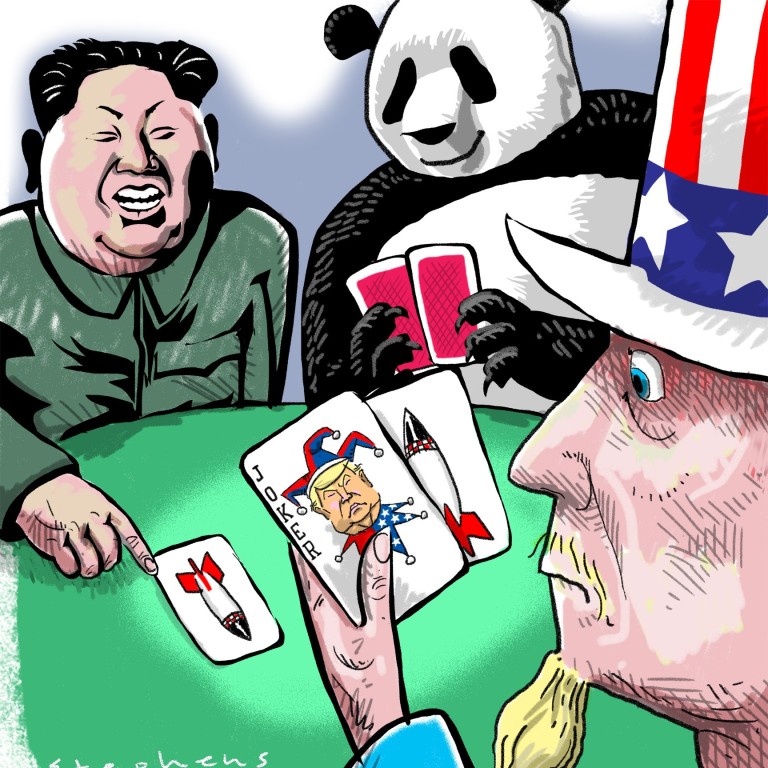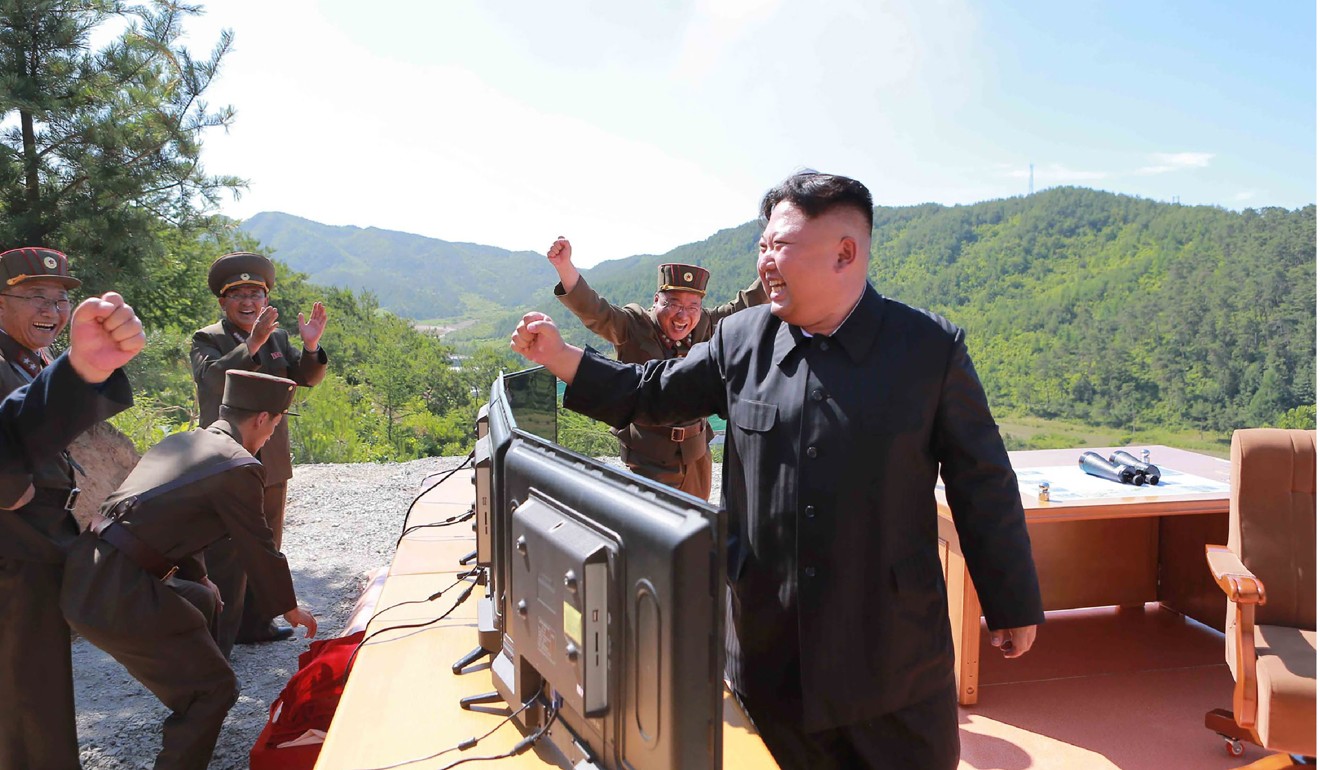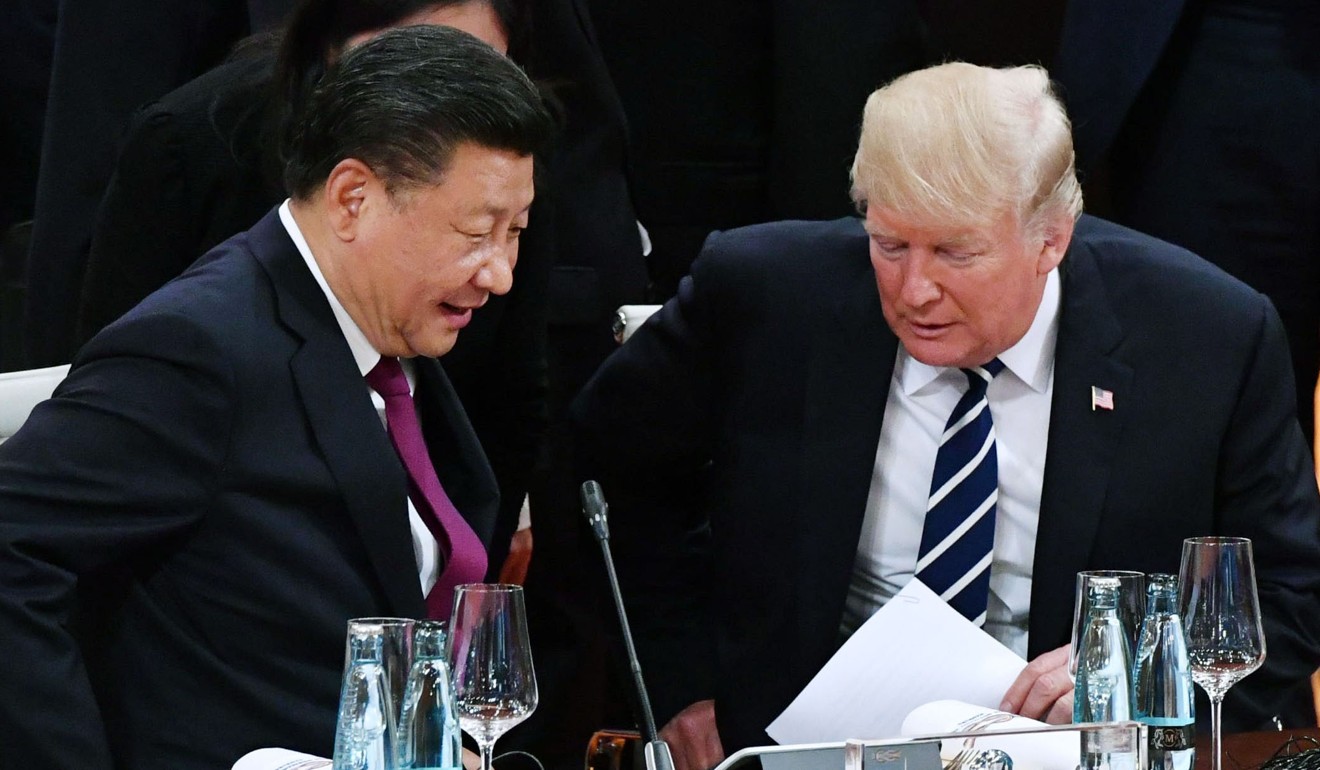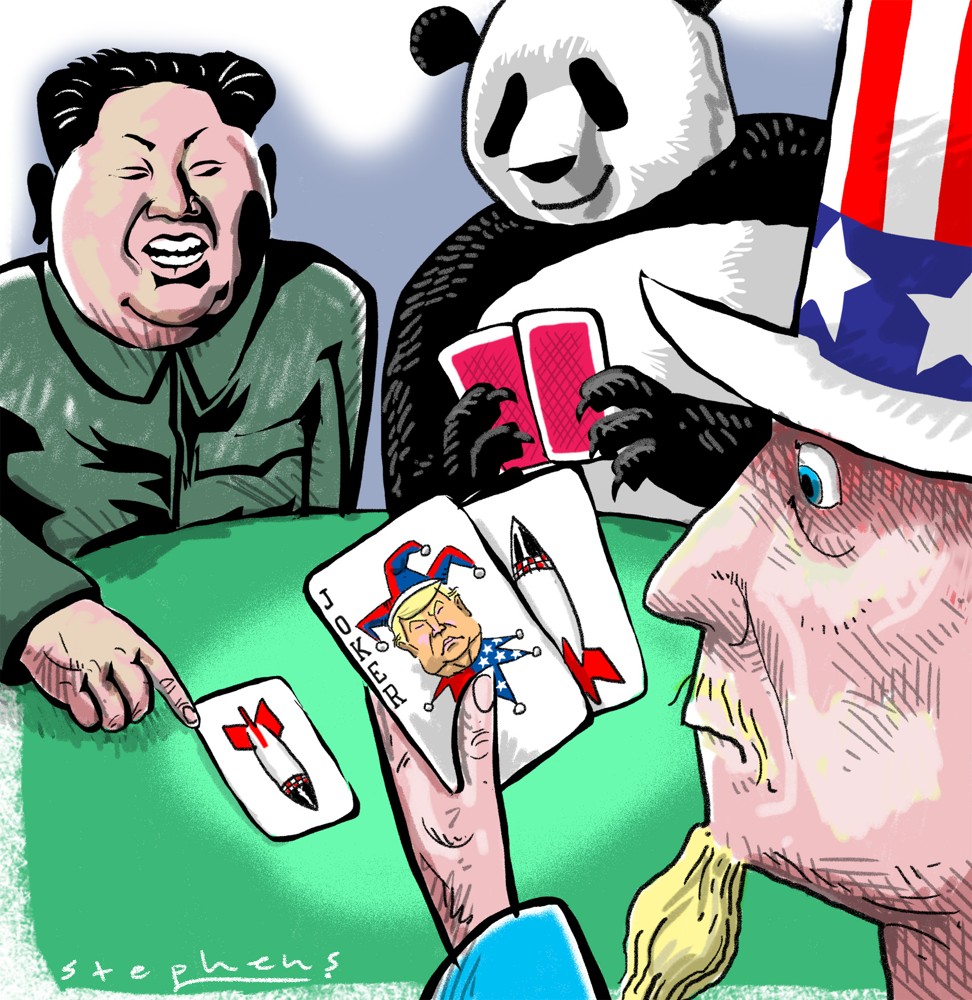
Empty US threats over North Korea are serving Beijing’s interests
Hugh White says Washington cannot disarm North Korea without risking major war, and empty threats only make America look weak and undermine its Asian alliances. China, its strategical rival, will benefit

What military strike? US war fleet still thousands of kilometres from North Korea
But those doubts grow every time America threatens military action and then fails to follow through. Allies increasingly fear, and rivals increasingly hope, that Washington will not stand by its commitments in a crisis.
So Washington needs to stop making these empty threats. It must either resolve actually to use armed force to destroy North Korea’s nuclear and missile programmes, or it must learn to live with them.
The problem with using force is that there are no credible military options.
That’s because there is no quick cheap “surgical strike” option. Any idea of a limited series of precisely targeted strikes to destroy the critical elements of Pyongyang’s nuclear and missiles programmes runs up against two stark realities.
There is no quick cheap ‘surgical strike’ option
First, there is no reliable intelligence on the locations of many of the key facilities, so it is impossible to know what to hit. Second, many of them are deeply buried in tunnels and thus impossible to destroy, even if they could be found.
That means any limited strike campaign would have little chance even of significantly degrading, let alone eliminating, Pyongyang’s weapons programmes. Moreover, it would certainly provoke major retaliation by the North against South Korean, Japanese and American targets.
And that would leave Washington with a tough choice about how to respond in turn to such retaliation. To do nothing would look very weak, but to counter-retaliate would risk a spiral of escalation leading swiftly to full-scale conflict.

Five reasons why the US cannot attack North Korea like it did Syria
That is why US Secretary of Defence James Mattis – clearly the most level-headed of Trump’s senior advisers – has warned that such a war would be “catastrophic”.
A North Korean ICBM fundamentally transforms the risks for America
The deeper reason is that the current situation works to Beijing’s advantage.
Of course China would much prefer that Pyongyang did not have nuclear weapons, but it seems willing to live with them, confident that its own nuclear forces will deter any North Korean attack against itself. And, more importantly, the North’s growing nuclear forces serve China’s interests precisely because they do pose such an insoluble strategic problem for America.
This is especially true now that the North seems on the threshold of developing an intercontinental-range ballistic missile that could mount a nuclear attack on America itself. A North Korean ICBM poses no new threat to China, because it is already within reach of the North’s shorter-range missiles, but it fundamentally transforms the risks for America.
More importantly, Pyongyang’s ability to target America directly undermines the confidence of US allies like South Korea and Japan that America would be willing and able to protect them from Pyongyang’s nuclear threats.

Can Trump do anything to stop a war with North Korea?
And that serves Beijing’s interests. It undermines these critical US alliances which are central to America’s strategic position in Asia, and correspondingly advances China’s bid to replace America as Asia’s leading power.
It is thus very unlikely that China will do much to help America solve its North Korea problem.
All this shows how deep and complex are the strategic challenges facing America in Asia today. They will only be made worse by kind of empty bluffing we have seen so far over North Korea from the Trump administration. A much more considered policy is needed. And that must start with a fundamental re-examination of US aims and objectives in Asia, and a coldly realistic assessment of the costs and risks that they would entail.
Hugh White is professor of strategic studies at the Australian National University in Canberra


